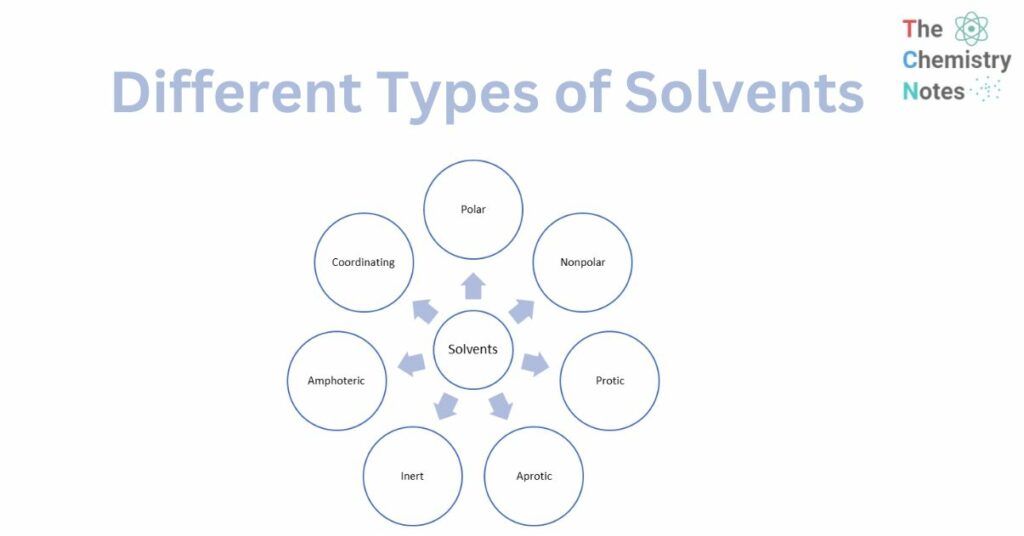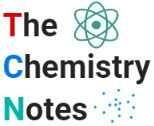
A solvent is a substance that can combine with other materials to form solutions. Solvents are frequently liquids, although they can also be solids or gases. A solution is a solute-solvent mixture. The amount of substance dissolved in a solvent in a smaller quantity than the solvent is referred to as the solute. A solvent, on the other hand, is a material in which a solute dissolves.
Solvents determine the physicochemical form of the substance as solid, liquid, or gas. Solvents include water, ethanol, methanol, acetone, and toluene.
Properties of solvent
Dipole moment
A solvent with a higher dipole moment will dissolve polar compounds more easily. The stronger the polarity of a solvent molecule, the more solvation energy is released when a solute dissociates.
Viscosity
A liquid solvent’s viscosity is an important attribute. Water, low molecular weight alcohols, and liquid ammonia are examples of very fluid solvents, whereas anhydrous sulfuric acid and high molecular weight alcohols are examples of highly viscous solvents. Low-viscosity liquids can be handled more easily than high-viscosity liquids.
Dielectric constant
The dielectric constant is a crude assessment of the polarity of a fluid. Water’s strong polarity is reflected by its high dielectric constant of 88.
Proton affinity
It is exclusively applicable to protonic solvents. It has a significant impact on the behavior of a solute in a specific solvent system. Ammonia has a higher proton affinity than water molecules. In an aqueous solution, acetamide exhibits relatively weak base behavior, however, in liquid ammonia, it exhibits acidic characteristics.
Electrical conductance
Electrical conductance provides information on a solvent’s self-ionizing properties.
Types of solvent
Polar solvent
Polar solvents have large dipole moments. The electronegativities of the bonds between the atoms of polar liquids are significantly different but measurable. Ions and other polar substances dissolve quickly in them. Polar solvents are strong dipolar compounds with an interface form of hydrogen bonding. They act by disrupting the covalent bonds of the solute, causing the solute to ionize. The majority of solvents utilized in medicine delivery systems are polar solvents such as water and alcohol.
Protonic or protic solvents
Protonic or protic solvents are those that can be a source of protons (H+ ions). Water and hydrogen fluoride are two protonic/protic solvents. They frequently contain hydrogen bonded to oxygen (as in OH-) or nitrogen (as in amine).
Polar protic solvent
A polar protic molecule is made up of an OH polar group with a non-polar tail. A formula R-OH can be used to represent the structure. They dissolve other polar protic molecular compounds. They are water-miscible (hydrophilic).
Water (H-OH), acetic acid (CH3CO-OH), and methanol (CH3-OH) are examples of polar protic solvents.
They are effective in salt dissolution because they have a high dielectric constant and polarity. Polar protic solvents have the following general properties:
i. Demonstrate hydrogen bonding
ii. presence of acidic hydrogen
iii. Capability to dissolve salts, which can be cations due to an unshared free electron pair or anions due to hydrogen bonding.
Polar aportic solvent
Polar aprotic solvent lacks acidic hydrogen, indicating that they are hydrogen bond acceptors with intermediate constants and polarity. For instance, acetonitrile.
Polar aprotic liquids have the following properties:
i. They accept hydrogen bonds
ii. They lack acidic hydrogen.
iii. They dissolve salts.
They are incompatible with strong bases, such as Grinard reagents and n-butyllitium.
Aprotic dipolar solvent
Dipolar aprotic compounds have a large bond dipole moment (a measure of a chemical bond’s polarity). They do not have an OH group.
Acetone ((CH3)2C = O), for example, is a dipolar aprotic solvent.

Nonpolar Solvent
They have little or no dipolar properties. They are frequently unable to form dipoles on their own. They can, however, dissolve suitable solutes using induced dipole-induced dipole interactions. They have dielectric constants ranging from 1 to 20. Fixed oils, carbon tetrachloride, and chloroform are examples of non-polar solvents. Nonpolar liquids have minimal to no solubility for ionic and polar solutes. Non-polar liquids have bonds between atoms with similar electronegativities, such as carbon and hydrogen (think hydrocarbons like petrol). Similar electronegativities will result in the absence of partial charges in atom bonds, defining these molecules as “non-polar.”
Acidic solvent
Acidic solvents are those that have a great tendency to donate protons due to their acidic nature. Examples are H2SO4, HF, and CH3COOH.
Basic or protophillic solvent
Basic or protophillic solvent has a strong ability to accept protons and is basic in nature. Examples include ethylenediamine, ammonia, and hydrozine.
Amphoteric solvent
An amphoteric solvent has hydrogen in its formula and can donate or receive protons depending on the nature of the interacting entity. It functions as both an acid and a basic. As a result, it is amphoteric. These liquids easily break down into protons and anions. Acetic acid and water are two common examples.
Coordinating solvents
Coordinating solvents are those that can coordinate with the solute’s metal ion or anions. Coordination solvents include ammonia, sulfur (IV) oxide, nitromethane, and others.
Non-coordinating solvent
They include carbon tetrachloride and saturated hydrocarbons, which cannot coordinate with metal ions or anions.
Inert solvent
They have low relative permittivities (or dipole moments) and very weak acidic and basic characteristics. Examples include CH2Cl2, CHCl3, and benzene. They are useful in situations where solvent interaction must be monitored. Because of their low permittivity, electrical conductivity, and dipole moment, they are less reactive.
Oxygenated solvent
Oxygenated solvent is an organic solvent with oxygen molecules. Paints, inks, medicines, fragrance industries, adhesives, cosmetics, detergents, and food industries all employ oxygenated solvents. Alcohols and glycol ethers are two examples of oxygenated solvents.
Aliphatic solvents
Aliphatic solvent molecules have a straight-chain structure. For example hexane, gasoline, and kerosene.
Pure aromatic solvents
Pure aromatic solvent molecules have a benzene ring structure. They include benzene, toluene, and xylene.
Halogenated solvents
Halogenated solvents are organic solvents that contain halogenic atoms such as chlorine (Cl), fluorine (F), bromine (Br), or iodine (I) in their molecules.
Uses of solvent
- They are utilized as cleaning agents.
- They are found in many cosmetic items and are also used to remove nail polish.
- They are widely employed in the pharmaceutical industry.
- They are employed in the production of paints and coatings.
- Washer fluid is used in automobiles to clear debris and dirt off the windscreen.
- They are employed in the production of dyes and inks.
- They are used in the dissolution of paint, oil, and gases.
- For mixing or thin pigments, insecticides, glues, epoxy resins, and paints.
- To clean automobile components, tools, and electronics.
- To produce other chemicals.
References
- https://www.toppr.com/guides/chemistry/solutions/solvent/
- https://www.priyamstudycentre.com/2022/06/solvent-definition.html#google_vignette
- http://eknygos.lsmuni.lt/springer/236/Part%20VII/8%20Item.pdf
- https://testbook.com/chemistry/solvent-meaning
- https://collegedunia.com/exams/solvent-chemistry-articleid-862
